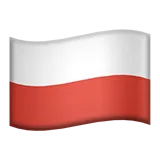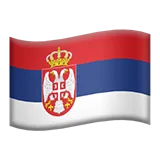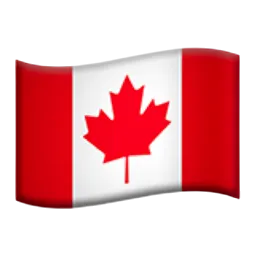Alexey Kulakov is JetStyle’s CEO, co-founder and expert in product development; for 5 years he’s been mentoring startups at corporate accelerators. Read Alexey’s new article in the series about prioritization. This is the final review of the most popular methods. Alexey summarizes his experience of implementing them into product development processes:
Introduction to QFD
QFD is Quality Function Deployment. This method was created in Japan in 1966; it initially helped to prioritize the development process at Toyota. QFD answers the question: “What technical characteristics should a product have to meet the customer's needs?”
According to the classic approach, you make a list of customer needs and a list of features that can be implemented. Then you evaluate how much each feature influences the execution of the needs.
In other words, QFD connects the qualities we want to achieve with the methods used to achieve them. The framework will show the impact a feature will have on creating various qualities of the product.
QFD is similar to RICE: we estimate how a feature results in the desired qualities of a product, compare it with other features and thus determine its priority.
Below you can see the original scheme for QFD. I believe that the classic version of the method is too complex. Moreover, it’s not entirely focused on what matters to product development.
.png)
If we use QFD for the development of digital products, then I have an idea of how to transform it.
We should focus on ‘jobs-to-be-done’, i.e. what customers’ needs we can cover with our product. It’s important that we work with one customer group at a time.
In other words, the first step is to answer the question “What customers’ problems do we solve?”. This will give us an understanding of what value we can create for them, and what methods we should use for this.
QFD will show the contribution of features to the value delivery process. I use this technique to help my mentees see the difference between a feature and a value. Product teams often confuse the concepts of the value and the functionality. For example, they say that the value of a phone camera is to take photos.
Let’s take an example to see how it works. We work in tourism, and our customers have a problem: they don’t know where to go on vacation. A job that needs to be done is “they have chosen a traveling destination”. Be careful not to include any feature descriptions for the job-to-be done; it’s not “they opened a chatbot to choose a destination”.
There will be several related product features that can solve the problem with different levels of success. I suggest using this evaluation system:
9—The feature guarantees value delivery,
3—Significantly influences but cannot solve the problem alone,
1—Has some influence,
0—Has no influence.

If we look at the table, we may conclude that the first feature with the maximum impact should be No. 1 in the priority list. However, this assumption would be wrong, because we also need to make sure that this need is the most relevant for our clients. Also, we have to create an approximate economic model of this feature’s implementation to ensure it’s cost-effective.
To solve these issues, let’s build a bigger table that takes into account the most important jobs-to-be-done, and weighs their frequencies.

1. We collect the problems our customers have mentioned to us. For our example with tourism, the pains might be "I don't know where to go on vacation," "I find it difficult to fit the trip into my work schedule," "I don’t want to miss my flight"
2. Paraphrase the pains into possibilities of value delivery using inversion:
"I don't know where to go on vacation" = "I need help choosing where to have my vacation."
"I find it difficult to fit into my work schedule" = "I need to find a suitable flight for a business trip."
"I'm afraid of missing my flight" = "I need to not miss my flight."
3. Indicate the frequency of the problems, i.e. how many times each issue was mentioned.
At this stage it's necessary to conduct research and specify the actual frequency valid for the chosen audience group; otherwise, all results will be just theoretical.
4. Let’s normalize the weight of each of the problems. Divide the frequency of each problem by the sum of the frequencies.
5. Research how competitors deliver these values. Suppose they have flight displays, flight search, seat selection schemes, and so on.
Evaluate how competitors' features solve customers' problems. Again, I suggest using this system:
9—The feature guarantees value delivery,
3—Significantly influences but cannot solve the problem alone,
1—Has some influence,
0—Has no influence.
Evaluation of the feature
An important feature of this variation of the method: we do not use intermediate values. If we can say that a certain feature can solve the customer's problem on its own, we give it a 9. But if it requires some additional conditions, no matter how important it may seem, we give it 3, not 5 or 6.
An important point: when we assign a nine to a feature, we not only prioritize it but also specify requirements for it. Your development team will have to work on it, so you have to account for the possible limitations. For instance, if you launch a chatbot to help people choose a travel destination, you have to make sure it contains information about hotels, flights and that it asks the user relevant questions. Without all these elements the feature may be useless.
We’ll go with just the flight display feature as an example. This one will definitely help if our customers use it to be on time at the airport. It’s no use for searching for travel destinations, and it will partially contribute to the problem of matching work schedules and business trips.
6. Calculate the benefit of the feature: multiply the weight of the problem by the evaluation of the feature.
7. The total benefit of the feature is 4.4 (3.6 + 0.5 + 0.3).
I did the calculation for the other 2 features from step 5, and in step 8 we’re going to compare how much time and money each of them require for implementation.
8.

As a result, you have the numbers. Use your expert thinking and the information from the framework to make the decision about which feature comes first.
When to Apply QFD:
In the early stages of product design, QFD helps understand which problems to solve, create features for solving them, i.e., select the future product’s core.
You may also apply QFD to mature products: you simply talk to your audience, and you get a long list of problems and features that can solve them. QFD helps understand what to do first.
In the early stages, QFD checks hypotheses about the existence of a business, and in the later stages, it deals with hypotheses about what will influence your business in the future.
One more lifehack: you could fill in the framework for your competitors first. This way you’ll see which of the jobs-to-be-done do not have their respective features yet. It will create a niche for you to be the first or the best in the industry. If you deliver a value better than your competitors, it will make your product more popular among the customers.
***
If you need a strategic partner that will guide you through the prioritization of your product development tasks, we can help: orders@jet.style
Read previous articles in the series about prioritization:








